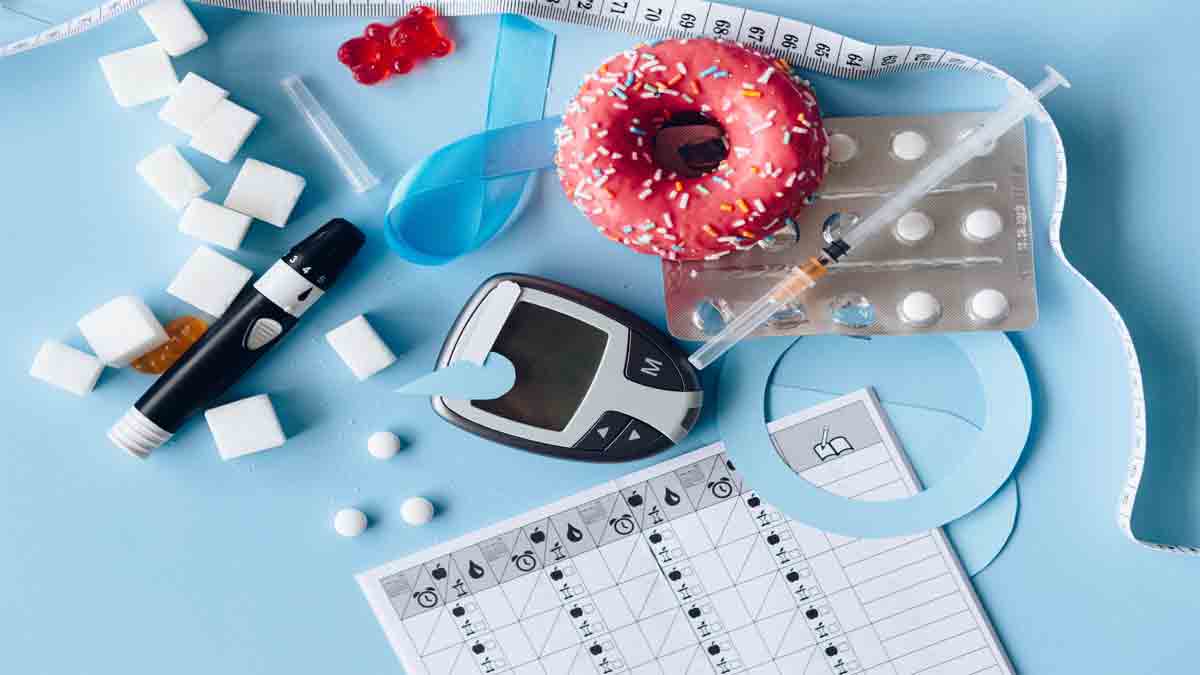Diabetic eye disease can have significant impact on an individual’s eye health and can even lead to permanent vision impairment or blindness. It’s essential for individuals with diabetes to work closely with their healthcare providers to monitor and manage their eye health as part of their overall diabetes care. Preventing or preventing the worsening of diabetic eye disease can be achieved by managing diabetes.
The outcomes of diabetic eye disease can vary depending on various factors, including the individual’s overall health, the severity of the eye condition, and the effectiveness of treatment. Early detection and management are crucial in preventing or slowing the progression of these conditions. Proper blood sugar control, regular eye exams, and appropriate medical interventions such as laser therapy, injections, or surgery can help manage diabetic eye disease and reduce the risk of vision loss.
How diabetes affect the eyes
While Informing about the details of Dr. Mandeep Singh Basu, Director of Dr. Basu Eye Hospital, “Diabetes affects the eyes by increasing blood glucose levels, which can cause temporary blurry vision when changes in diabetes care or medication are made. High glucose can cause fluid changes or swelling in eye tissues, causing temporary blurry vision that goes away when glucose levels return to normal.”
Read More: Junk Food, Soft Drinks Becoming ‘Slow Poison’ For Children’s Health In India
Over time, high blood glucose can damage tiny blood vessels in the back of the eyes, starting during pre-diabetes when glucose levels are higher than normal but not high enough for diagnosis. Damaged blood vessels may leak fluid, cause swelling, and grow new, weak blood vessels, leading to bleeds, scarring, or high pressure inside the eye. Most serious diabetic eye diseases begin with blood vessel problems.
Diabetic eye diseases threatening the sight
Diabetic eye diseases majorly include four vision impairments – diabetic retinopathy, macular edema, cataracts, and glaucoma.
- Diabetic retinopathy is a disease affecting the retina, which senses light and converts it into visual signals. Damaged blood vessels can cause the retina to weaken, bulge, or leak, leading to non-proliferative and proliferative stages, causing vision problems.
- Diabetic macular edema, a condition causing swelling in the macula, can lead to partial vision loss or blindness, often in individuals with other signs of diabetic retinopathy.
- Glaucoma, a group of eye diseases, can damage the optic nerve, double the risk of vision loss and blindness in diabetes patients, with symptoms varying by type of glaucoma patients have.
- Diabetes increases the risk of cataracts, cloudy eye lenses, due to high glucose levels causing deposits to build up in the eye’s lenses, affecting vision.
People more vulnerable to diabetic eye diseases
While any diabetic patient can develop vision impairment the risk is more with individuals having high glucose and high blood pressure that is not treated. Also, Diabetes during pregnancy can lead to rapid eye problems, especially if diabetic retinopathy is already present. The body’s adaptations to support a growing baby may stress blood vessels in the eyes, causing eye problems. Regular eye exams are recommended by healthcare teams to detect and treat issues early and protect vision.
Symptoms
Diabetic eye disease often doesn’t show early symptoms, with no pain or vision changes as damage grows. Symptoms may include blurred or wavy vision, frequent changes, dark areas or loss, poor color vision, spots or dark strings, and flashes of light. It’s important to consult an eye doctor if you experience any of these symptoms.
Read More: How To Reduce Medical Cost, Make Healthcare More Accessible
Diagnosis of diabetic eye disease
The diagnosis of diabetic eye disease typically involves a combination of medical history, eye examinations, and imaging studies to assess the health of the eyes and detect any abnormalities related to diabetes. An initial visual acuity test may be performed to assess how well the patient can see with or without corrective lenses.
A dilated eye exam is the best way to detect eye problems from diabetes. Doctors use eye drops to widen pupils, allowing them to examine a larger area at the back of each eye using a magnifying lens. Vision may be blurry for a few hours after the exam. Other tests may be suggested based on the patient’s health history.
Once the diagnostic assessments are completed, the healthcare provider will determine the presence and severity of diabetic eye disease and develop an appropriate treatment plan. It’s important for individuals with diabetes to have regular eye exams, as early detection and intervention can significantly reduce the risk of vision loss associated with diabetic eye disease. Depending on the findings, treatment options may include lifestyle modifications, better blood sugar control, medications, laser therapy, intraocular injections, or surgery.













